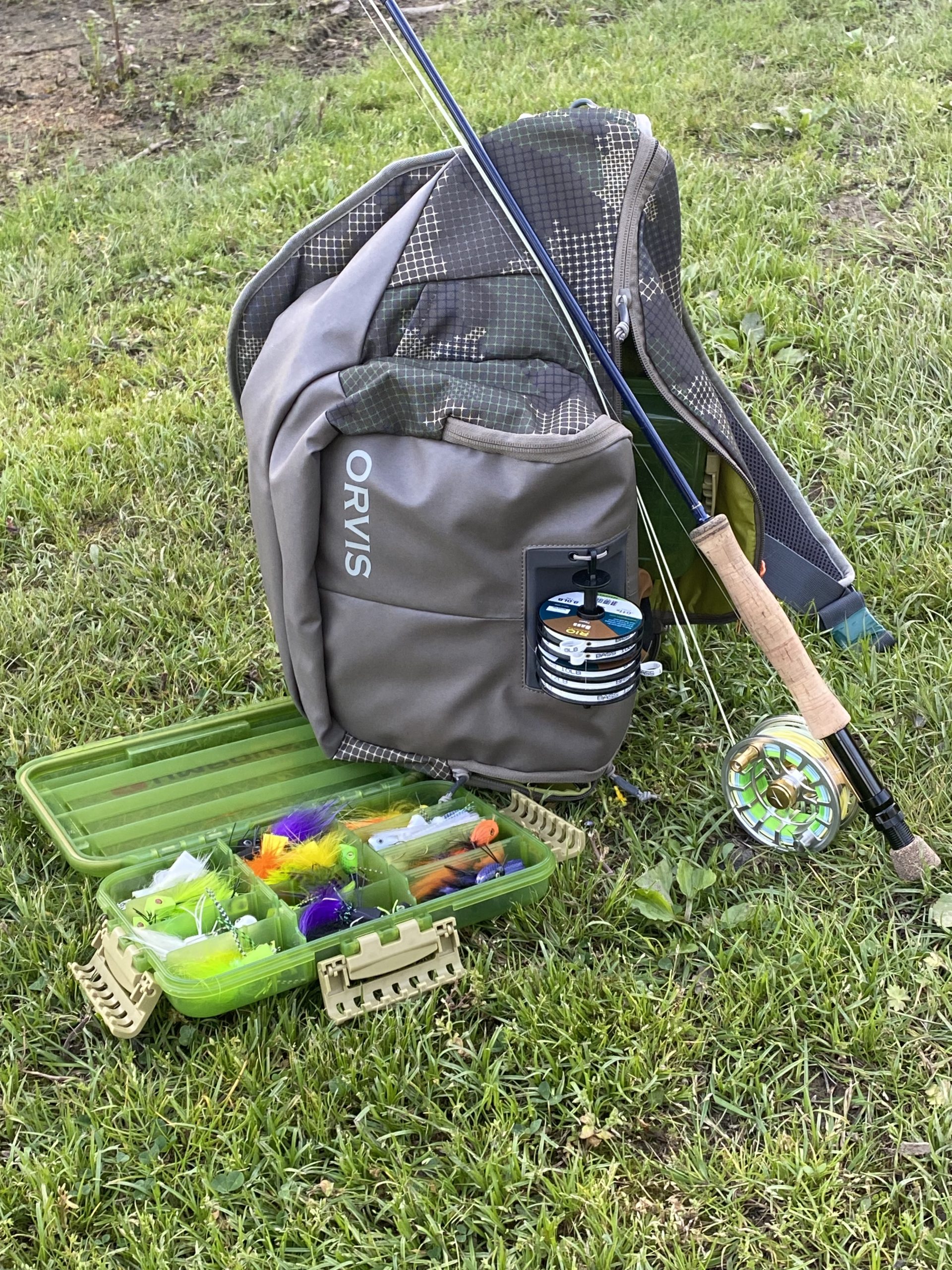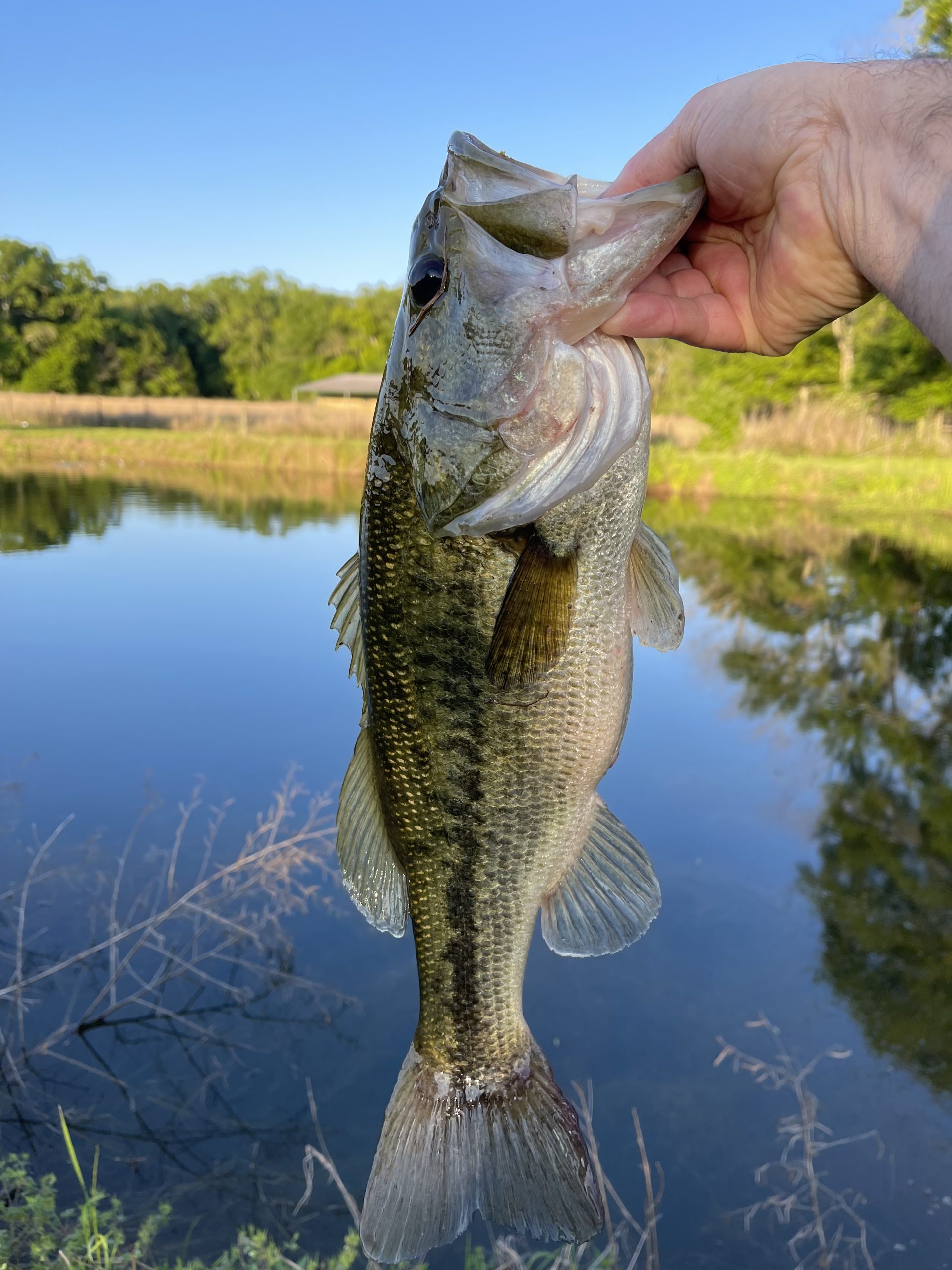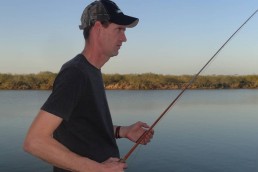Fly Rod Bass Fishing in the Heat of Summer
SHARE THIS POST
In my home state of Tennessee, July may be considered early summer, but the heat and humidity are simply brutal. That heat can make fly fishing for bass very tough on the bigger lakes in the area. High water temps coupled with bright sunny days make fishing tough, not to mention the volume of post-Covid pleasure boat traffic. I learned years ago to fish early and late if you want to maximize your time on the water; since 2020, that lesson has been amplified. Also, focusing on smaller bodies of water can be extremely productive and can take most of us back to where things all started: in small lakes and ponds.
Fly fishing is not complicated. It’s the fly fishermen who tend to be way overcomplicated when it comes to catching largemouth bass. Equipment will never trump good casts and “fishy instincts.”

Rods and reels
Any good 6- to 8-weight rod and reel will get the job done. I prefer a Temple Fork Outfitters Mangrove Coast rod for most scenarios. Pretty much any rod and reel combo would suffice because a good quality line is what makes a rod cast well.
When bass are your target, especially when fishing from the bank, there is generally not much room for false casting. That’s where a good quality shooting head style line comes in handy; the Rio outbound short is the best option available today. The heavy front section lets you make the most of reasonable casts with limited line in the air.
When it comes to flies for summer bass, there are two very defined, and very opinionated, trains of thought. Both have equal merit but tend to spur spirited conversations among fly fishermen.
We will call the first train of thought the Naturalist camp. This camp is more traditional and believes in “Matching the hatch,” theoretically speaking. There is sound logic to this camp, and when bass are eating shad, I would throw a shad-type pattern.
Are you enjoying this post?
You can be among the first to get the latest info on where to go, what to use and how to use it!
In the next camp, we have the hardcore warmwater fly fishers. They understand you don’t have to “match the hatch” and could care less if a fly looks like anything from this planet at all.

When the day is done, both camps catch fish—lots of fish. With bass, all the rules go out the window, because even the best science tells us they are ambush predators and opportunistic feeders. In other words, put a fly in front of a hungry or aggressive bass and they will try to destroy it.
In the heat of early summer, any baitfish pattern, popper, diver or slider will get the job done—some better than others at times.
Due to the heat, fishing early and late in the day are generally the most productive times. Remember, when the sun gets up in the sky, fish will move deeper or tight to some type of cover. After all, fish don’t have eyelids and can’t simply close their eyes.
When approaching a small lake or pond, be cognizant that these smaller bodies of water transmit noise and vibrations much farther than their larger brethren. Stealth is a key component to a successful adventure.
So, don’t let the heat and humidity keep you in the house. Grab a rod and box of flies and hit your local lake as the sun comes up.
Did you enjoy this post?
You can be among the first to get the latest info on where to go, what to use and how to use it!
Troy Basso
Troy Basso is a freelance outdoor writer and photographer from Tennessee. He may be reached though his website at troybassooutdoors.com.

